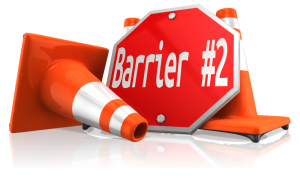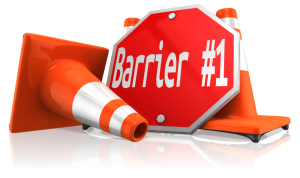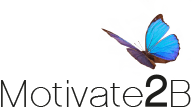3 Most Common Barriers Keeping Conscious Business Leaders on the Hamster Wheel
[originally published in the Huffington Post on 25 Nov 2016]
If there ever was a time to realize creative potential inside companies it is now. A quick look at the top issues facing companies of all sizes reveals the usual short list: attracting and retaining talent, managing reputation, with the need to create flexible workplaces and balance benefits with bottom line. While tempting to view these challenges with concern over the bottom line, doing so sabotages gains possible when entrepreneurial spirit applied to innovation is ignited full throttle. Even conscious business leaders, who keep an eye on the horizon (longer term), getting work done and being attentive to workplace dynamics, are still susceptible to running around in circles.
In case the term ‘spirit’ is distracting, a definition is in order. Personal spirit refers to three measurable elements:
- initiative,
- sense of control, and
- outlook on life.
Entrepreneurial spirit combines personal spirit with a sense of adventure, willingness to experiment, an insatiable desire to learn and a capacity to bounce forward.
Without entrepreneurial spirit at play, companies plod through the motions, guided by habitual processes and routine. The company runs on auto-pilot so much so that either the purpose of the task is assumed, or the underlying agenda is to explicitly or implicitly control behavior. Either way, the company falls asleep at the wheel numbing leaders into the same repetitive albeit comfortable cycle. Running hard to wind up in the same place.
Context Drives Behaviour and Regulates Entrepreneurial Spirit
The term ‘conscious business leaders’ applies to a small group since
85% of leaders in the U.S. are operating at the survival level. [See Seizing the Executive Imperative To Expand Consciousness] One source of the hamster wheel is the existence of internal politics. Behind internal politics is the desire to protect personal reputation at the expense of achieving business goals. Aversion to risk, and therefore innovation, is inherent. Entrepreneurial spirit suffocates in working climates where trust is low and expression of diverse ideas is suppressed. In contrast, innovation requires creativity and a comfort with uncertainty.
The Impact of Systemic Barriers
Systemic beliefs add to the pressure of delivering on short-term goals blocking innovation and adaptability. Attracting and retaining talent, or mitigating risks to reputation are restricted to a narrow set of strategies arising from one or more of these three dangerous barriers:
 Focusing on Recurring and Constant Barriers
Focusing on Recurring and Constant Barriers
Characteristic of problem oriented, adrenaline charged companies is the persistent focus on solving problems. Problems love analytical thinking. Innovation on the other side requires exploratory thinking – the opposite of problem solving. Linear thinking doesn’t help because problem solving tends to assume that there is a singular root cause. In a complex system, multiple causes exist. Unless perception is expanded you will find yourself running in circles: busy but not productive.
Asking leaders to innovate and apply their entrepreneurial spirit while continuing to focus on barriers keeps everyone running in a loop.
Personal Impact:
Leaders find themselves chasing problems. Since what you focus on expands, problems also expand. Adrenaline is addictive as is the illusion of feeling in control. In workplaces designed to control behaviour, business leaders at every level will find themselves repeating the same patterns over and over again.
[content_box style=“autumn“ title=“Insight„] Awareness of what you are focusing on helps you develop flexibility in how you perceive (see) the situation. Increasing flexibility gives you more options, while letting go of the need to control everyone else. It is a start at least. [/content_box]
 Falling Unconsciously into Organizational Patterns and Behaviors
Falling Unconsciously into Organizational Patterns and Behaviors
Beliefs keep decisions running in a rut and operate without being noticed until you systematically poke them to the surface. For example, walk into a company that believes it exists to purely make a profit and you will find behaviours shaped by those beliefs. Or if, for instance, the core belief is that employees must be told what to do, then selection of metrics and implementation of performance management strategies will reflect that belief. Beliefs drive decisions unless the company and business leaders have deliberately worked with values as a principle-based approach to decision making.
Where habitual patterns operate on unchecked auto-pilot, efforts to explore and experiment (the prerequisites for innovation / entrepreneurial spirit) run smack into complacent thinking. “Do something different, but don’t change anything.”
Organizational Impact:
Take a look at the metrics. Whenever a company focuses on quantitative measures and statistics alone, meaning is likely to be missing. Without meaning there is no inspiration and no fuel to fire up creativity, much needed for innovative responses to uncertainty.
[content_box style=“autumn“ title=“Insight„]Reflecting to observe patterns in recurring issues or undesirable results, strengthens ability to pivot. [/content_box]
 Losing Connection to What Matters Most to You
Losing Connection to What Matters Most to You
By far the biggest barrier is to sight of what matters most to you as a fully aware and caring human being with a desire to contribute your talent to something meaningful. Yes, food needs to be put on the table but the days of trading your soul for security are gone. Rather than being driven by the need for societal approval or by metrics that manipulate behavior reconnecting to your personal sense of purpose and of inspiration is the only door available going forward.
[content_box style=“autumn“ title=“Insight„]Personal reflection to identify what you rely on: social approval, meeting external expectations for instance, enables you to chart a course toward personal fulfillment. [/content_box]
[highlight color=“autumn“ style=“style-2″]What do you see as the barriers to stepping off the hamster wheel and do what you believe, deep down, you’re truly capable of?[/highlight]
About Dawna Jones:
Dawna Jones delivers customized workshops and insights raising leadership and decision making awareness of a wider spectrum of skills and intelligences. She provides dynamic oversight into organizational change initiatives by spotting the patterns, and openings for innovation and fresh approaches to working with complex adaptive systems. Contact Dawna through LinkedIn or directly at www.FromInsightToAction.com
Follow Great Work Cultures on Twitter: www.twitter.com/GWCLeadLink
